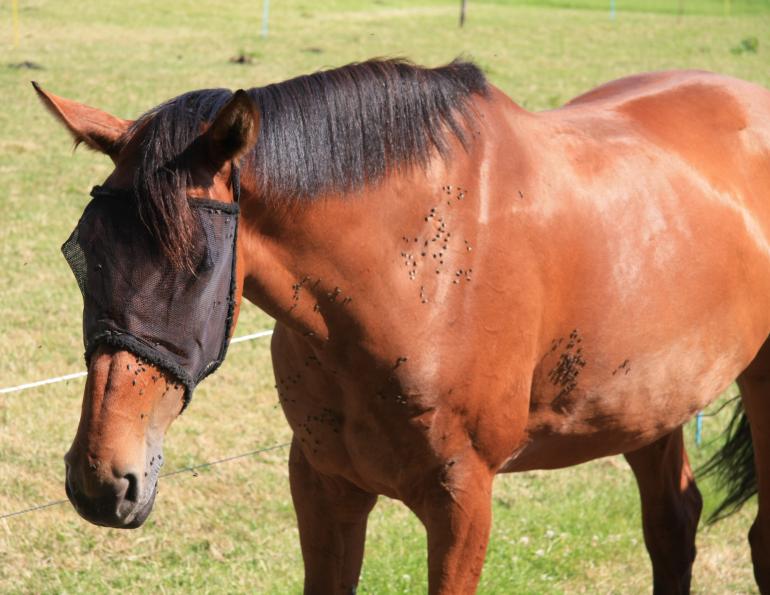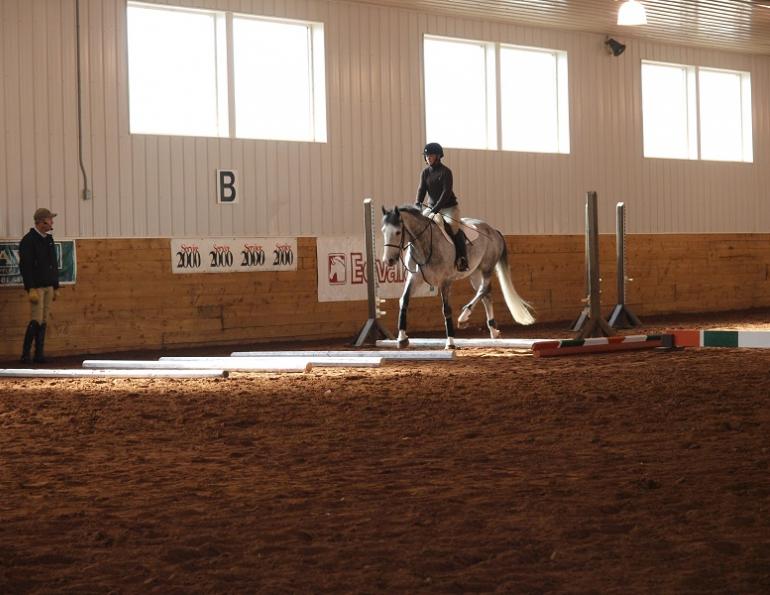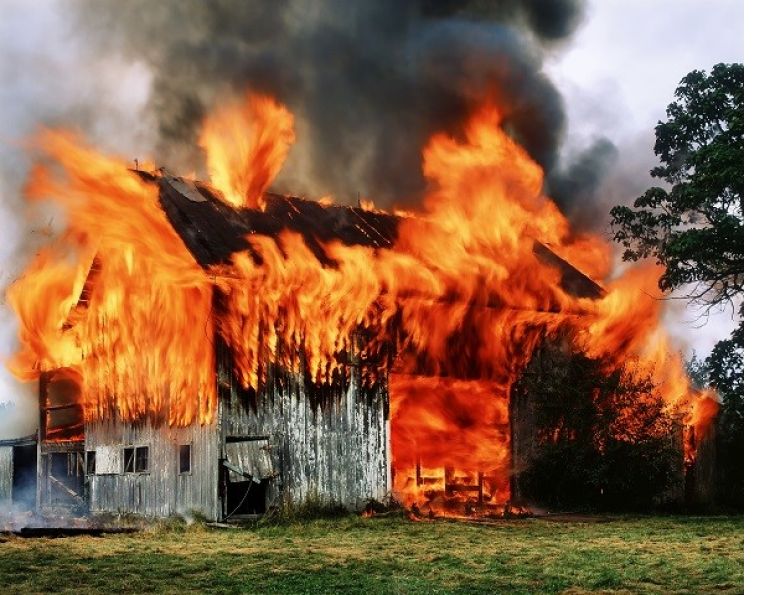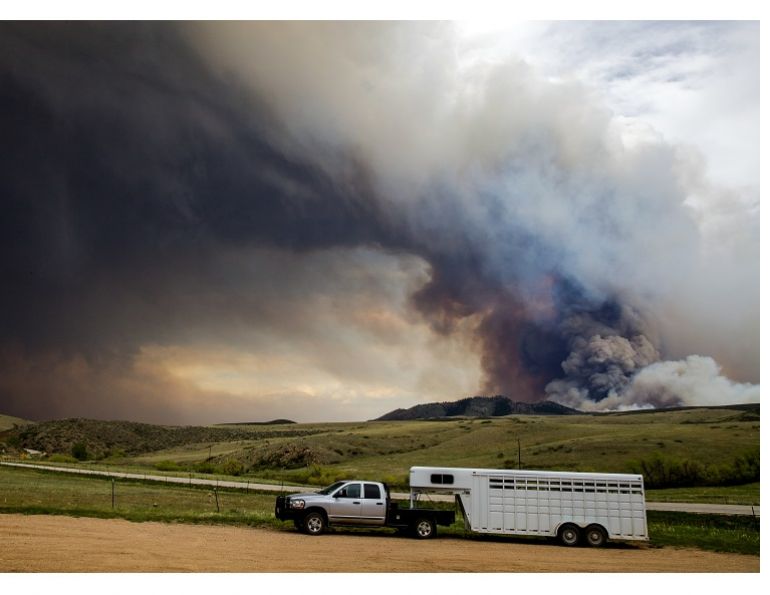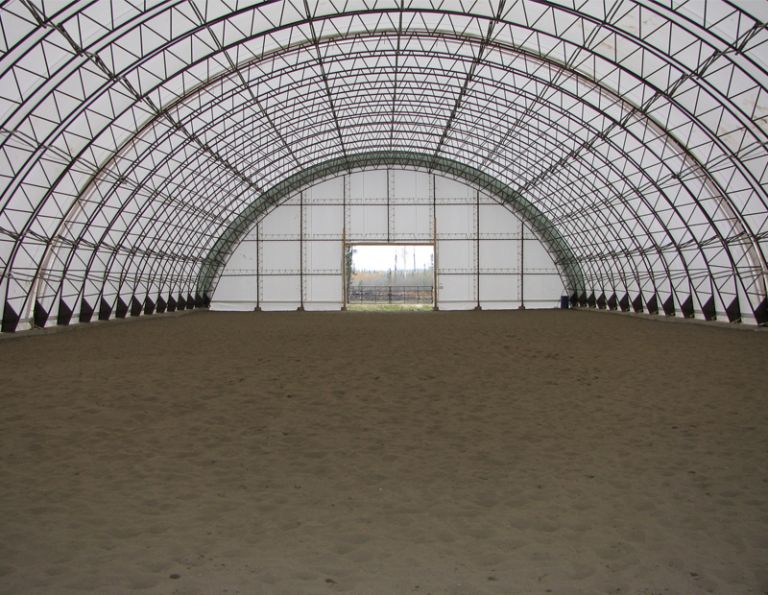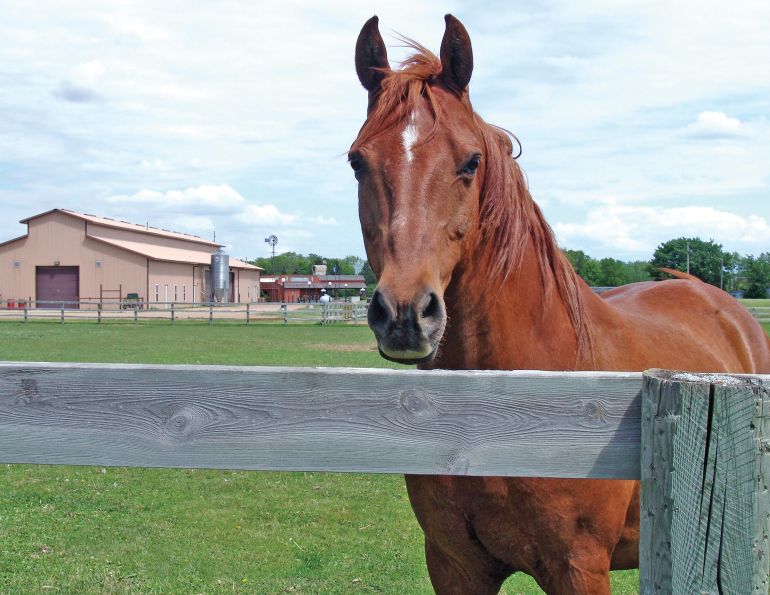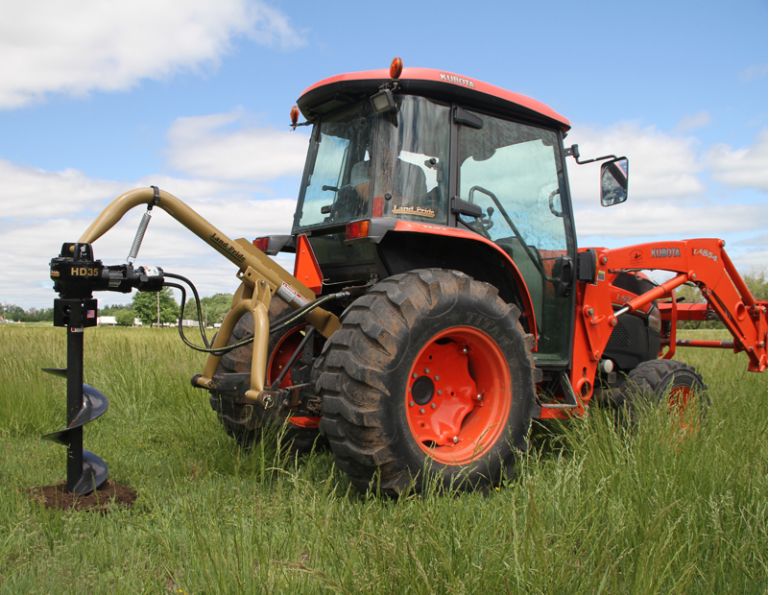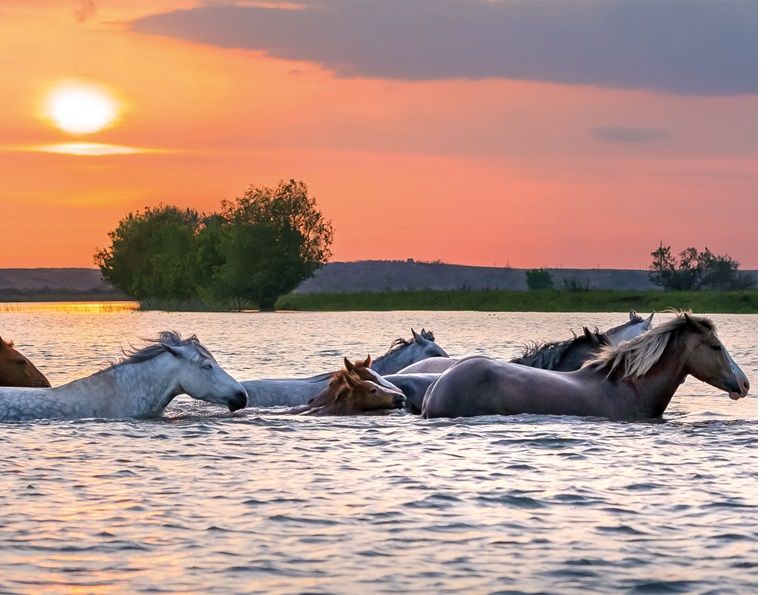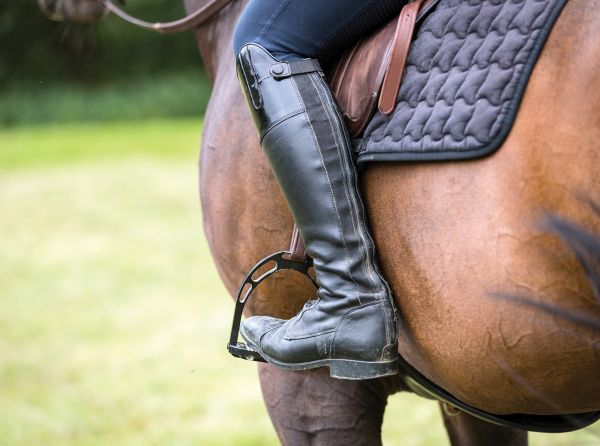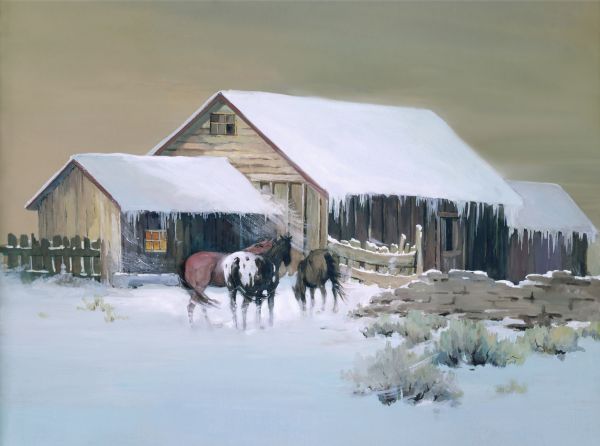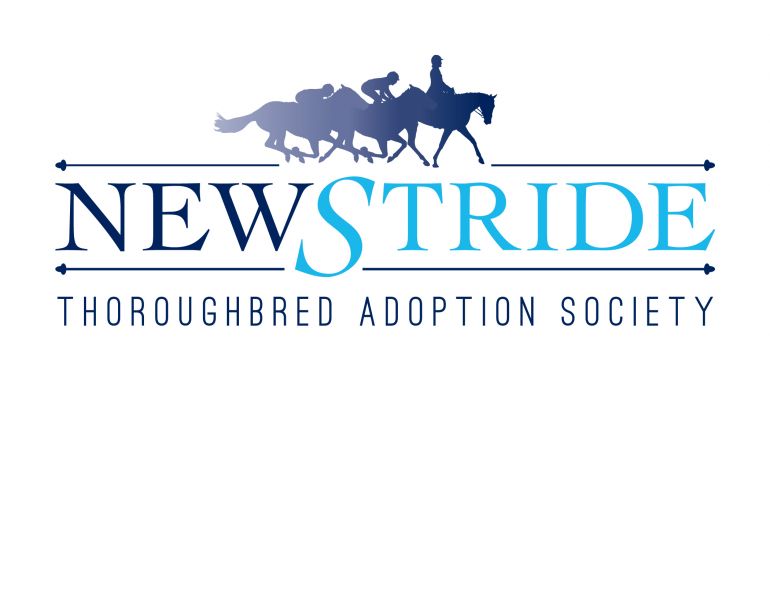How to Reduce the Ever-Present Risk
By Kathy Smith
It’s now more than 150 years since the Great Chicago Fire, which, according to popular legend, broke out after Catherine O’Leary’s infamous milking cow kicked over a lantern in the barn on the night of October 8, 1871. The resulting barn fire, aided by the wind, destroyed three square miles of the City of Chicago, killing approximately 300 people, destroying 18,000 buildings, and leaving 100,000 people – a third of the city’s population – homeless before it was finally brought under control the next day.
The Great Chicago Fire changed the way public officials and firefighters viewed fire safety. Now, fire departments everywhere educate the public about the importance of fire prevention and safety.
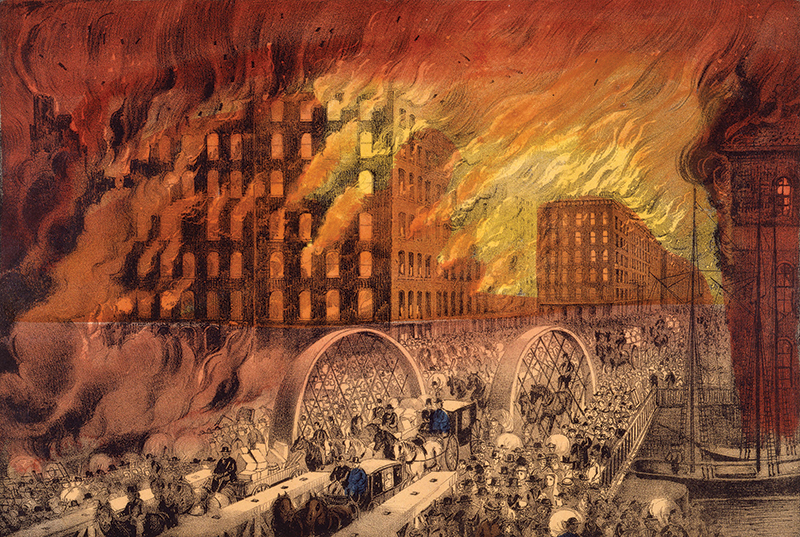
The Currier & Ives lithograph of the Great Chicago Fire shows people fleeing across the Randolph Street Bridge. Thousands of people literally ran for their lives before the flames, unleashing remarkable scenes of terror and dislocation. Legend has it that this devastating fire was caused by a milk cow kicking over a lantern in the barn.
Fire is an ever-present concern for barn owners. Farm fires pose a unique threat because farms tend to be isolated and without access to large quantities of water, and they’re located in rural areas without easy access to the services of the well-equipped fire departments of urban areas. And because barns and their contents are typically highly flammable, fires in these buildings can quickly burn out of control. According to the Farm & Food Care Ontario website, it takes only three to four minutes of the fire starting for the barn to be completely filled with smoke, and a barn will be completely engulfed in less than six minutes.
Most barn fires go undetected until flames are visible because they usually occur at night or during the early morning hours, and the buildings rarely have smoke detectors or sprinkler systems. Smoke detectors save lives because smoke is produced in the earliest stages of fire development. Once flames are present, the fire has become dangerous and unpredictable.
First responders to barn fires face serious challenges including lack of familiarity with the barn design or not knowing how to handle the animals involved. Animals are difficult to evacuate from a burning building, and unconfined animals will run back in. Other hazards common to farms include fuel and propane tanks, chemicals such as fertilizer and crop sprays, hay stacks, cutting torches, and manure piles, making the situation more difficult and dangerous.
Related: Horse Trailer Accidents on the Road

Combustibles including cobwebs, dust, and loose hay and straw should be removed regularly. Photo: Shutterstock/Kotenko Oleksandr
Horse barn fires are the most common of all farm fires, yet investigations have shown that most of these fires could have been prevented. Although there is no such thing as a fireproof barn, fortunately we don’t have to wait for a tragedy to motivate us to start fireproofing our barns and implementing fire prevention strategies.
Fire prevention should be incorporated into your regular barn management practices. Your local fire department can provide fire safety information and can also inspect your barn and farm to suggest ways to reduce risks and identify hazards. Enlist the assistance of your local fire department for a fire prevention safety visit, and to provide recommendations for a pre-plan.
Let’s take a look at the fire prevention and safety measures you can implement in and around the barn. The planning and preparation you do now will greatly reduce the likelihood of a barn fire and help save lives should a fire occur.
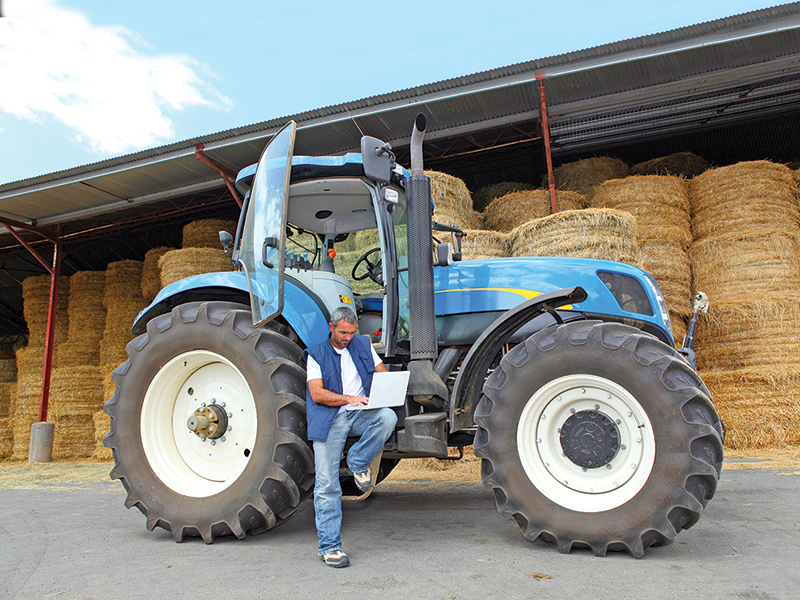
Sources of ignition and fuel should be separated. Hay and bedding should be properly dried and stored in a building at least 50 feet away from the stable. Farm equipment should be stored in a building separate from the hay and bedding. Photo: Canstock/Photography33
Related: Equine Emergency Preplan Checklist
Checklist For Fire Safety
There are many steps that can be taken to establish good fire prevention practices. The following are particularly important:
Outside
- My address is posted very clearly in reflective numbers and can be visibly seen from both directions on the road.
- I have contacted the fire department and they have given me minimum height and width requirements and turning radius for their vehicles.
- My driveway and road can accommodate my fire department’s vehicles, there are no overhanging branches, and the roadway is gravel or other improved base.
- My parking area does not impinge on access or turning room for emergency vehicles, and no one is allowed to park in front of the stable other than for temporary loading and unloading.
- My fire department knows the location of all water sources on my property, including ponds, wells, storage tanks, hydrants, which are all easily accessible.
- If there is a pond on my property, I have installed a standpipe (a rigid vertical pipe to which fire hoses can be connected).
- My fire department knows the location of all emergency utility shutoffs.
- If there is a lock on my gate, I have a lock box and my emergency responders have access. If there is a combination lock, they have the combination.
- There is a pre-plan (a Fire Safety Plan which includes the layout of the property indicating the buildings and number of animals inside, etc.) in the lock box and the fire department also has a copy.
- I have cleared a fire barrier along my road and along my driveway and keep it clear no matter what the weather conditions.
- I have cleared all weeds, brush, and debris from around my stable.
- There are no overhanging trees or low hydro wires at my stable that could impede emergency vehicles.
- I have clearly marked and easily accessed water spigots on all sides of my stable, with attached hoses long enough to reach the opposite end of the building.
- I have a shovel and a ladder on each side of my stable.
- I have a backup generator available (stored safely away from the stable) to provide emergency lighting in case of fire.
- I have posted NO SMOKING signs around my stable and have informed my boarders that smoking will not be tolerated anywhere on my property.
Related: Insurance Coverage for Natural Disasters
Inside
- My stable has a sprinkler system, which was installed by a licensed contractor and is appropriate to my climate and water system.
- I have installed smoke detectors in my stable and check them at least twice a year. If possible, I will install smoke detectors in the barn that will trigger alarms inside and outside the barn, as well as in the house so that I will be alerted to a barn fire even when I am out of hearing range of the barn alarms.
- I have clearly marked all utility shutoffs - my boarders know where they are and how to turn them off.
- I have a minimum of two five-pound fire extinguishers with a minimum rating of 2A-10BC mounted at each exit and in all mechanical and feed rooms. If my stable is large, multi-level, or it houses a generator, I will equip it with a minimum ten-pound fire extinguishers every 50 feet on each level.
- Everyone at my stable knows how to use a fire extinguisher.
- I have more than one doorway from the outside into my stable. While interior doors may be locked, these exterior doors are never locked.
- Access doors open to the full width of the aisles.
- Every stall has a door that opens to the outside of the building.
- Equipment is in place outside the exterior stall doors that can be made into a safe runway to a paddock or pasture. When evacuating horses, exterior doors should open against the outside wall, and horses are herded down the runway to a safe holding area at least 100 feet from the stable. As each horse exits his stall, the door is closed behind him to prevent a loose horse from running back into a stall.
- I have all electrical wire encased in non-corrosive conduit.
- I have all light fixtures encased in safety cages.
- Cobwebs and debris are removed on a regular basis. Loose hay and straw are swept up and disposed of.
- All doors to stalls are in good working condition.
- I do not have any household extension cords, fans, or heaters in my stable. All equipment is designed for stable use and is stored when not in use.
- I only use industrial-grade extension cords and don’t overload them, and keep them out of the horses’ reach.
- Any household electrical appliances such as coffee makers, microwaves, etc. use covered grounded outlets and are unplugged when not attended.
- I have a phone in my stable. It is easily accessible, clearly marked, and emergency numbers and directions to the property are posted close by.
- Hay and bedding are properly dried before storing to reduce the risk of spontaneous combustion, and stored in a separate building at least 50 feet away from my stable.
- All fuel, and vehicles that use it, are at least 50 feet away from my stable
- All aisles are clear of any hazards, including hay bales, tack boxes, storage bins, electrical cords, and cleaning equipment such as rakes and wheelbarrows.
- I have lightning protection installed on top of my stable and outbuildings.
- I have used flame retardant paints on any wood in my stable.
- Every horse has a halter and lead rope that is stored on the front of each stall.
- All boarders and horse owners have practiced emergency evacuation procedures and emergency preparedness training with the horses to get them used to being handled during an evacuation. Wear a large coat and hat with a bulky backpack to resemble a firefighter wearing breathing apparatus. The horses are accustomed to being approached at night with a flashlight and to being led while blindfolded.
- Every horse knows how to load into a trailer under any circumstance.
- Our stable practices fire drills and every boarder understands that once flames are seen, no one will be allowed to enter the stable, regardless of what person or animal is inside.
- Safety and evacuation procedures are discussed at every boarder’s meeting and everyone is aware of the dangers and knows the Emergency Action Plan.
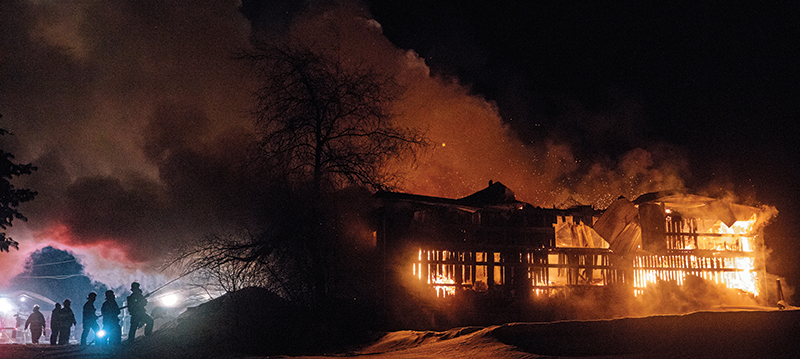
Firefighters battle a barn fire in Quebec in January, 2019. Photo: Shutterstock/Steve Jolicoeur
Checklist for Fire Safety printed with the kind permission from Equine Guelph.
Related: Wildfire! Flood! Earthquake! Horse-Specific Emergency Planning
Fire Safety Site Visit
A Painless Procedure to Prevent Future Panic
By Jackie Bellamy-Zions, Equine Guelph
No one sees the hidden hazards in your horse barn quite like an expert. One simple call to your local fire department for a site walk through may be the best investment you make to protect your herd.
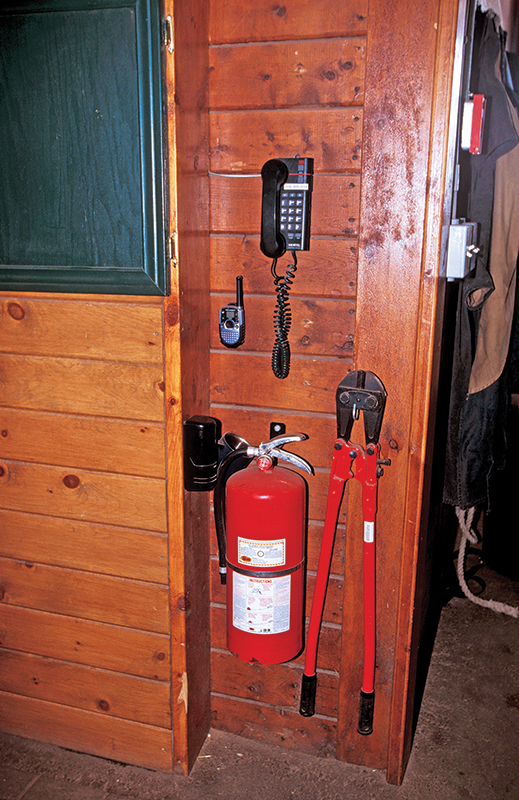
Every barn should be equipped with fire extinguishers with a minimum rating of 2A-10BC, mounted at each exit and in all mechanical and feed rooms. The phone should be accessible with emergency numbers clearly marked. Photo: Clix Photography
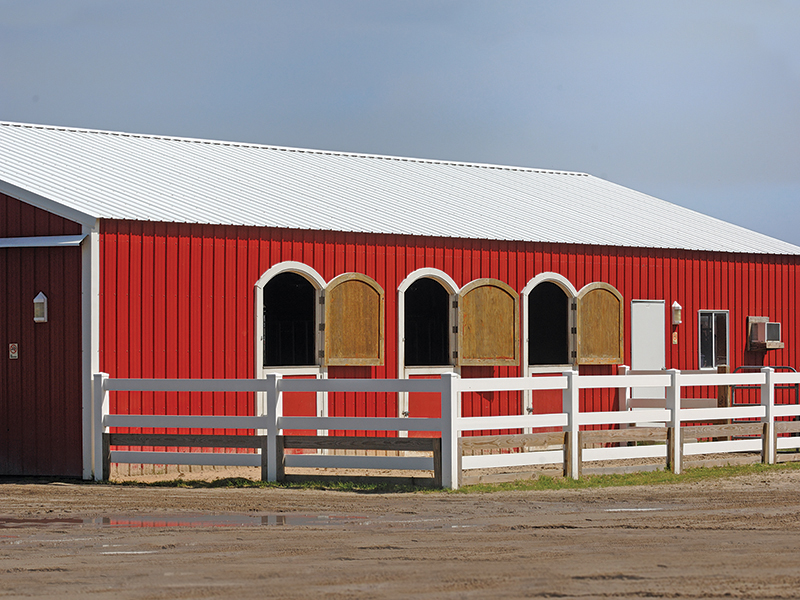
The stable should be clear of brush and debris, and roadways and lanes accessible so that firefighting equipment can reach all buildings. Photo: Clix Photography
On speaking with Assistant Fire Chief, Jason Benn of the North Perth Fire Department in Ontario, it became crystal clear that having your local department out for a site visit is not only painless – it’s the best way to create a solid pre-plan. Benn dispelled some of the fears callers have that a visit will result in huge costs involving infractions and enforcement.
“We are there to give friendly suggestions,” says Benn, who has conducted many walk-throughs for local farms, boarding stables, and such. “Information collected is kept private for fire service emergencies only.”

Practice emergency evacuation with your horse. He should be accustomed to being led while blindfolded, and handled at night by someone wearing bulky gear and using a flashlight. He should also load into a trailer under any circumstances. Photo: Clix Photography
Benn goes on to explain how useful the information in a pre-plan is in the event of an emergency. A pre-plan includes mapping out the location of where all animals are being housed, as well as the location of all emergency utility shut-offs and identifying all buildings on the property and sources of water available should firefighters require access to it. Pre-plans should be stored in a neutral location on site, such as in a lock box at the gate that emergency responders have access to, or on the side of the house or a drive shed.
Some of the most common topics discussed concern housekeeping and electrical.
Related: 18 Ways to improve Security on Your Horse Farm
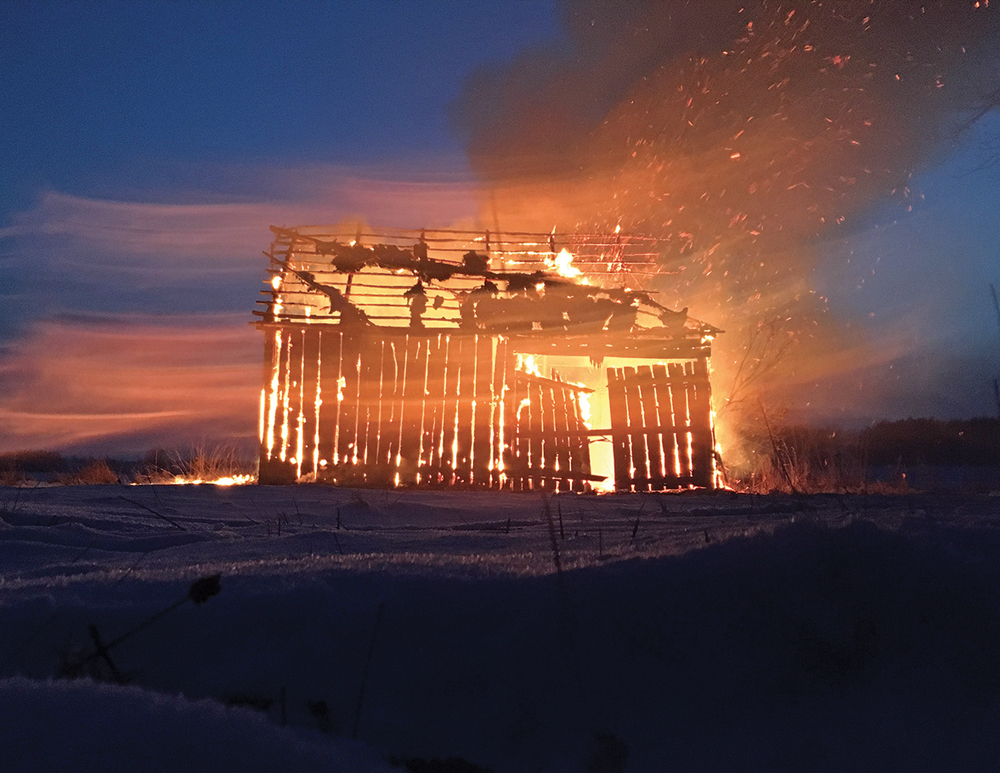
The majority of barn fires occur at night, and go undetected until flames are visible.
“Taking down curtains of cobwebs, properly storing piles of combustibles, and putting electrical in conduit are all easy steps to improve fire safety,” says Benn. Having a No Smoking policy in the barn is, of course, crucial. With so many combustibles in a barn (hay, dust, bedding), having an attitude that “it won’t happen to me” is like playing Russian roulette.
Where the horse owner may see a stack of neatly piled hay and a cozy tack room with a heater plugged in keeping the saddles free of mold, the fire prevention officer quickly spots all of the sources of ignition and fuel, and can make recommendations to reduce these risks. Implements, tractors, and other equipment should be stored in a building separate from hay and bedding. Fertilizer stored by hay could also cause a catastrophic event. Separation to alleviate fuel and ignition sources is a best practice when it comes to barn fire prevention.
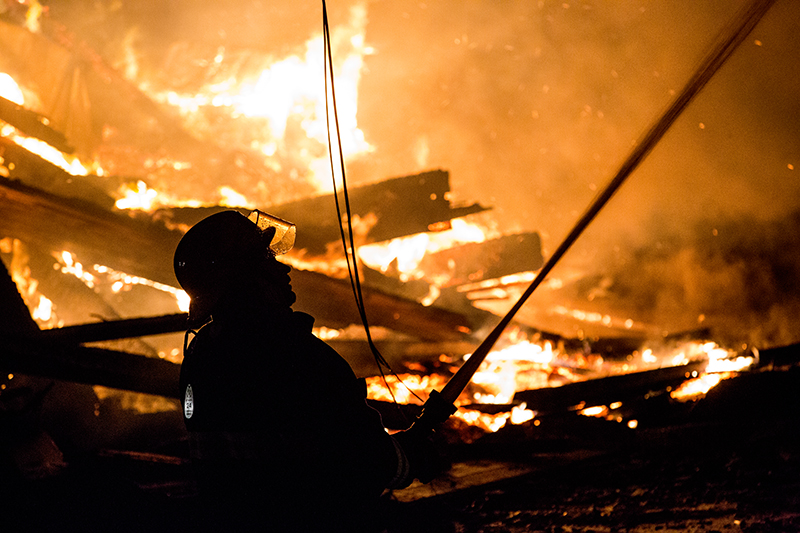
Photo: Shutterstock/Steve Jolicoeur
Seasonal considerations can also increase the risk of fire. During cold months, heating and electrical systems can be taxed when drinking water freezes and then thaws. Water buckets that are allowed to run dry can leave elements exposed, causing bedding or other combustible material to ignite.
Attempting to thaw pipes with a torch is a huge hazard. Heat trace lines provide a solution to pipes that would otherwise freeze.
During harvest times, improper storage of crops containing too much moisture can cause spontaneous combustion. Prior to storing hay, a moisture check is essential.
Benn also has recommendations for those planning to build. “It is a good idea to have someone from the fire department come in during the planning stages to look at the building plan. Depending on the size of the facility, we have requested water to be on site and helped calculate how much. We can also advise on lane widths, turn arounds, avenues to get around buildings and so on.”
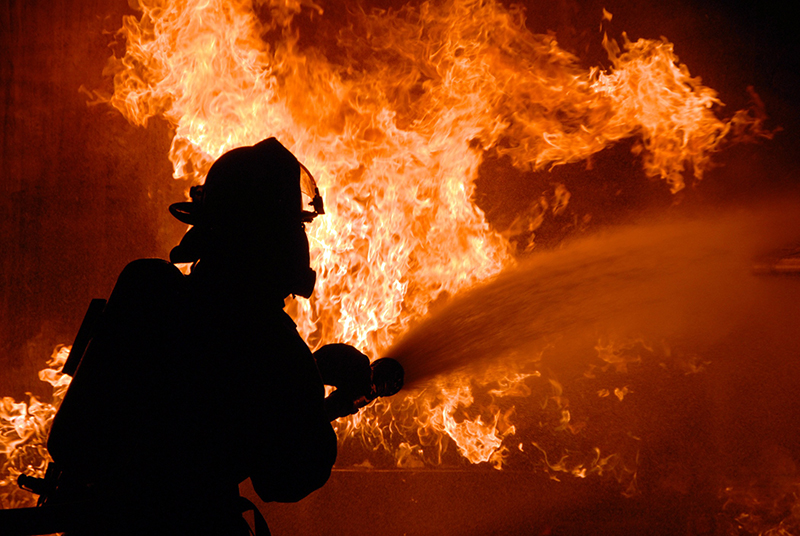
“The big thing that was instilled in me since childhood is to invest in your investment,” says Benn. “If you look after it, it will look after you.” So, don’t put off making that call for tips and a site visit from your local fire department, and make use of the great resources on fire safety available from Ontario Ministry of Agriculture Food and Rural Affairs, Ontario Federation of Agriculture, Equine Guelph, provincial equestrian associations, and your local fire department.
Related: A Remarkable Ending to a Terrible Accident
Related: Fire Safety on the Horse Farm
To read more by Kathy Smith on this site, click here.
Main photo: Shutterstock/Steve Jolicoeur




